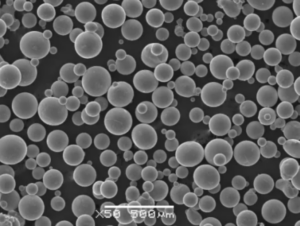ما هو النماذج الأولية السريعة بالليزر?
تُحدث النماذج الأولية السريعة بالليزر (LRP) ثورة في الطريقة التي تتعامل بها الصناعات مع التصنيع. هل تساءلت يومًا عن كيفية إنشاء تصميمات معقدة بسرعة البرق؟ تخيل تقنية تحول التصميمات الرقمية إلى كائنات ملموسة بدقة لا مثيل لها. هذه هي سحر LRP. في هذه المقالة، سنتعمق في تفاصيل النماذج الأولية السريعة بالليزر، من مساحيق المعادن المتطورة إلى مجموعة واسعة من تطبيقاتها.
نظرة عامة على النماذج الأولية السريعة بالليزر
النماذج الأولية السريعة بالليزر هي تقنية متطورة تستخدم طاقة الليزر لإنشاء كائنات ثلاثية الأبعاد طبقة تلو الأخرى. تشتهر هذه التقنية، التي تعد جزءًا من الفئة الأوسع للتصنيع الإضافي، بقدرتها على إنتاج هياكل مفصلة ومعقدة للغاية. سواء كنت تعمل في مجال الفضاء أو السيارات أو حتى الرعاية الصحية، فإن LRP توفر مزايا لا مثيل لها من حيث السرعة والدقة وكفاءة المواد. ولكن كيف يعمل كل هذا، وما الذي يجعله فعالاً للغاية؟ دعنا نوضح ذلك.

تكوين مواد النماذج الأولية السريعة بالليزر
عندما يتعلق الأمر بـ LRP، فإن تكوين المواد المستخدمة أمر بالغ الأهمية. مساحيق المعادن هي نجمة العرض، حيث يقدم كل منها خصائص فريدة تجعلها مناسبة لتطبيقات مختلفة. ولكن ما هي بالضبط مساحيق المعادن هذه، وكيف تؤثر تركيباتها على المنتج النهائي؟
أنواع وخصائص مساحيق المعادن للنماذج الأولية السريعة بالليزر
يعد فهم الأنواع المختلفة من مساحيق المعادن المتاحة لـ LRP أمرًا بالغ الأهمية. فيما يلي تفصيل شامل لنماذج مسحوق معدني محددة وتركيباتها وخصائصها الفريدة.
| المسحوق المعدني | التركيب | الخصائص الرئيسية | التطبيقات |
|---|---|---|---|
| فولاذ مقاوم للصدأ 316L | الحديد (Fe)، الكروم (Cr)، النيكل (Ni)، الموليبدينوم (Mo) | مقاومة عالية للتآكل، قابلية لحام جيدة | الغرسات الطبية، معدات تجهيز الأغذية |
| AlSi10 ملغ | الألومنيوم (Al)، السيليكون (Si)، المغنيسيوم (Mg) | خفيف الوزن وموصلية حرارية عالية | قطع غيار السيارات، مكونات الفضاء |
| انكونيل 718 | النيكل (Ni)، الكروم (Cr)، الحديد (Fe)، الموليبدينوم (Mo) | قوة عالية، ومقاومة للأكسدة | شفرات التوربينات، محركات الصواريخ |
| التيتانيوم Ti6Al4V | التيتانيوم (Ti)، الألومنيوم (Al)، الفاناديوم (V) | نسبة عالية من القوة إلى الوزن، والتوافق الحيوي | الغرسات الطبية، والمكونات الفضائية |
| الكوبالت كروم (CoCrMo) | الكوبالت (Co)، الكروم (Cr)، الموليبدينوم (Mo) | مقاومة عالية للتآكل، مقاومة للتآكل | زراعة الأسنان وزراعة الأسنان وزراعة العظام |
| فولاذ ماراجينج ستيل (MS1) | الحديد (Fe)، النيكل (Ni)، الكوبالت (Co)، الموليبدينوم (Mo) | قوة وصلابة عالية وسهولة في التشغيل الآلي | الأدوات، مكونات الفضاء |
| النحاس (النحاس) | النحاس (النحاس) | توصيل حراري وكهربائي ممتاز | المبادلات الحرارية، والمكونات الكهربائية |
| هاستيلوي إكس | النيكل (Ni)، الكروم (Cr)، الحديد (Fe)، الموليبدينوم (Mo) | مقاومة درجات الحرارة العالية، ومقاومة الأكسدة | محركات التوربينات الغازية، الأفران الصناعية |
| فولاذ مقاوم للصدأ 316L | الحديد (Fe)، الكروم (Cr)، النيكل (Ni)، الموليبدينوم (Mo) | مقاومة عالية للتآكل، قابلية لحام جيدة | الغرسات الطبية، معدات تجهيز الأغذية |
| انكونيل 625 | النيكل (Ni)، الكروم (Cr)، الموليبدينوم (Mo)، النيوبيوم (Nb) | مقاومة ممتازة للإجهاد، قوة شد عالية | المعالجة الكيميائية والتطبيقات البحرية |
| الألومنيوم AlSi10Mg | الألومنيوم (Al)، السيليكون (Si)، المغنيسيوم (Mg) | خفيف الوزن وموصلية حرارية عالية | قطع غيار السيارات، مكونات الفضاء |
مزايا النماذج الأولية السريعة بالليزر
لماذا تجتاح النماذج الأولية السريعة بالليزر عالم التصنيع؟ دعنا نستكشف بعض المزايا البارزة التي تجعل هذه التكنولوجيا تغير قواعد اللعبة.
السرعة والكفاءة
يمكن أن تكون طرق التصنيع التقليدية تستغرق وقتًا طويلاً، خاصة عند إنتاج أجزاء معقدة. من ناحية أخرى، يمكن للنماذج الأولية السريعة بالليزر أن تنشئ تصميمات معقدة في جزء صغير من الوقت. تخيل أنك بحاجة إلى جزء يكاد يكون من المستحيل تصنيعه. مع LRP، يمكنك تجهيزه في غضون ساعات بدلاً من أسابيع.
الدقة والدقة
تتفوق النماذج الأولية السريعة بالليزر في إنشاء مكونات عالية الدقة. تتيح قدرة الليزر على التركيز على نقاط مجهرية تفاصيل دقيقة للغاية. هذا مهم بشكل خاص في الصناعات التي يمكن أن يكون فيها حتى أصغر انحراف عواقب وخيمة، مثل صناعة الفضاء أو الأجهزة الطبية.
تعدد استخدامات المواد
من الفولاذ المقاوم للصدأ إلى السبائك الغريبة، فإن مجموعة المواد التي يمكن استخدامها في LRP واسعة. هذا التنوع يعني أنه يمكن تكييف التكنولوجيا لمجموعة واسعة من التطبيقات، سواء كان ذلك لإنتاج مكونات خفيفة الوزن لصناعة السيارات أو الغرسات المتوافقة حيويًا للرعاية الصحية.
فعالة من حيث التكلفة للتصميمات المعقدة
بالنسبة للتصميمات المعقدة أو المخصصة، يمكن أن يكون التصنيع التقليدي باهظ التكلفة بسبب الأدوات المطلوبة. تعمل LRP على التخلص من الحاجة إلى أدوات معينة، مما يجعلها خيارًا أكثر فعالية من حيث التكلفة، خاصة للإنتاج منخفض الحجم أو النماذج الأولية.
تقليل النفايات
في التصنيع بالطرح التقليدي، يتم إهدار كمية كبيرة من المواد حيث يتم قطع الزائد من المواد الخام. LRP، كونها عملية إضافية، تستخدم فقط المادة اللازمة لإنشاء الجزء، مما يقلل بشكل كبير من النفايات ويجعلها خيارًا أكثر استدامة.
تطبيقات النماذج الأولية السريعة بالليزر
ينعكس تنوع النماذج الأولية السريعة بالليزر في مجموعة واسعة من تطبيقاتها. إليك نظرة فاحصة على كيفية قيام الصناعات المختلفة بتسخير هذه التكنولوجيا.
| الصناعة | طلب | المزايا |
|---|---|---|
| الفضاء | شفرات التوربينات، والمكونات الهيكلية | أجزاء خفيفة الوزن وعالية القوة؛ تقليل المهلة |
| السيارات | مكونات المحرك، الأجزاء المخصصة | فعالة من حيث التكلفة للإنتاج منخفض الحجم، وتحسين الأداء |
| الطبية | الغرسات والأطراف الصناعية | التخصيص للمرضى الأفراد، التوافق الحيوي |
| الإلكترونيات الاستهلاكية | مكونات الإسكان، التصميمات المعقدة | التصنيع الدقيق، التكرار السريع |
| المجوهرات | التصميمات المخصصة، الأنماط المعقدة | دقة عالية، تقليل وقت الإنتاج |
| الطاقة | المبادلات الحرارية، مكونات التوربينات | مقاومة درجات الحرارة العالية، الاستخدام الفعال للمواد |
| الدفاع | مكونات الأسلحة، الدروع خفيفة الوزن | التصميمات المخصصة، النماذج الأولية السريعة للاختبار |
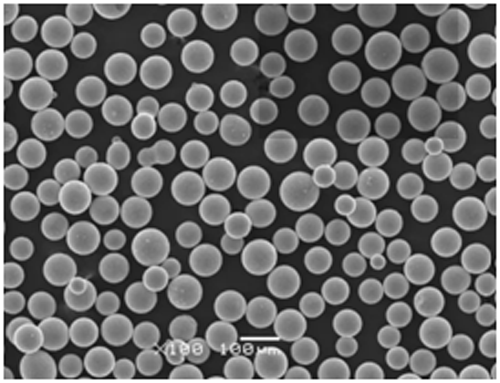

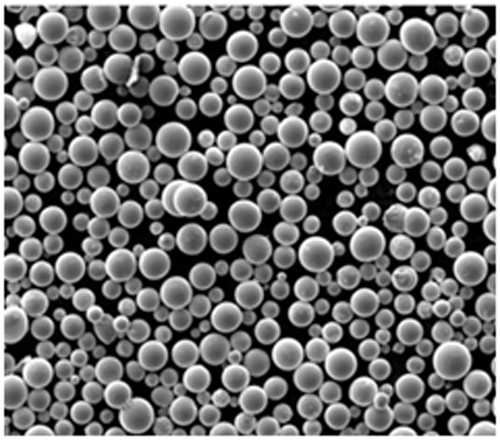
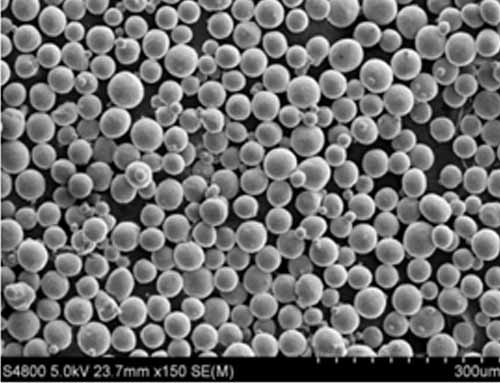
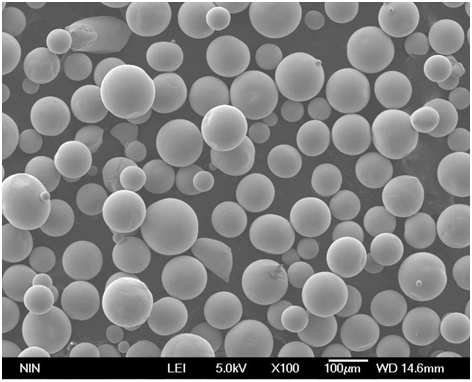
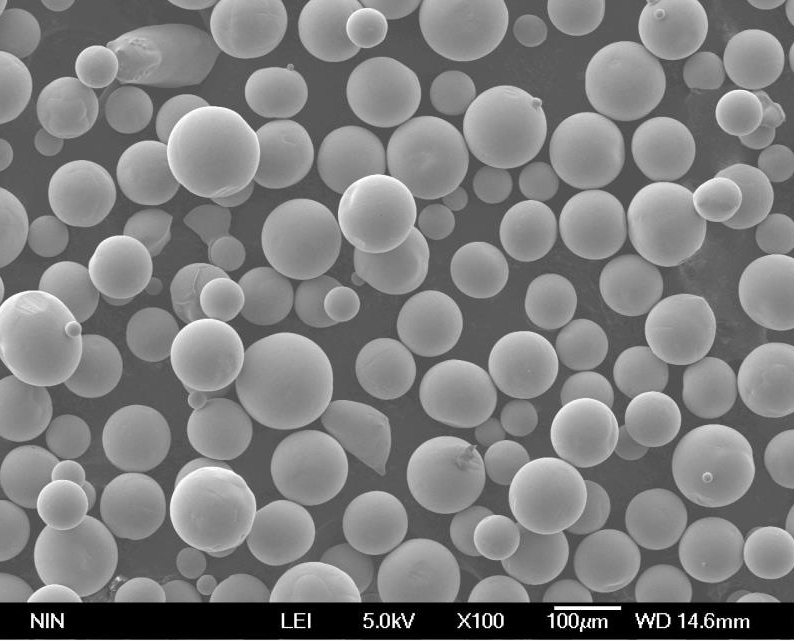
المواصفات والأحجام والدرجات والمعايير في النماذج الأولية السريعة بالليزر
يعد فهم مواصفات وأحجام ودرجات المواد المستخدمة في النماذج الأولية السريعة بالليزر أمرًا ضروريًا لاختيار المواد المناسبة لمشروعك. يوجد أدناه جدول تفصيلي يوضح بعضًا من أكثر المعايير والمواصفات شيوعًا.
| المواد | قياسي | الصف | توفر الحجم |
|---|---|---|---|
| فولاذ مقاوم للصدأ 316L | معيار النجم F138، ISO 5832-1 | 1.4404 | أحجام المسحوق: 15-45 ميكرومتر، 45-100 ميكرومتر |
| AlSi10 ملغ | ISO 3522 | 3.2371 | أحجام المسحوق: 20-63 ميكرومتر، 63-150 ميكرومتر |
| انكونيل 718 | AMS 5662، ASTM B637، AMS 5662، ASTM B637 | 2.4668 | أحجام المسحوق: 15-53 ميكرومتر |
| التيتانيوم Ti6Al4V | أستم F1472، ISO 5832-3، ISO 5832-3 | 3.7165 | أحجام المسحوق: 15-45 ميكرومتر |
| الكوبالت كروم (CoCrMo) | ISO 5832-4، ASTM F1537 | 2.4778 | أحجام المسحوق: 10-45 ميكرومتر |
| فولاذ ماراجينج ستيل (MS1) | AMS 6514 | 1.2709 | أحجام المسحوق: 15-45 ميكرومتر |
| النحاس (النحاس) | ASTM B170 | C10100 | أحجام المسحوق: 10-45 ميكرومتر |
| هاستيلوي إكس | AMS 5754، ASTM B435، AMS 5754، ASTM B435 | 2.4665 | أحجام المسحوق: 15-45 ميكرومتر |
تفاصيل الموردين والتسعير لـ النماذج الأولية السريعة بالليزر المواد
يعد اختيار المورد المناسب لمواد النماذج الأولية السريعة بالليزر أمرًا بالغ الأهمية لضمان الجودة وكفاءة التكلفة. ستجد أدناه قائمة بالموردين ذوي السمعة الطيبة ونظرة عامة على تفاصيل التسعير.
| المورد | المواد | نطاق السعر (لكل كيلوغرام) | الموقع | المهلة الزمنية |
|---|---|---|---|---|
| تكنولوجيا النجار | فولاذ مقاوم للصدأ 316L | $100 – $150 | الولايات المتحدة الأمريكية | 2-4 أسابيع |
| EOS GmbH | AlSi10 ملغ | $120 – $170 | ألمانيا | 3-5 أسابيع |
| هوغاناس إيه بي | انكونيل 718 | $250 – $300 | السويد | 4-6 أسابيع |
| أركام إيه بي | التيتانيوم Ti6Al4V | $300 – $400 | السويد | 3-5 أسابيع |
| ساندفيك | الكوبالت كروم (CoCrMo) | $200 – $250 | السويد | 3-5 أسابيع |
| مضافات GKN | فولاذ ماراجينج ستيل (MS1) | $180 – $220 | المملكة المتحدة | 3-5 أسابيع |
| تقنية LPW | النحاس (النحاس) | $90 – $120 | المملكة المتحدة | 2-4 أسابيع |
| كيناميتال | هاستيلوي إكس | $270 – $320 | الولايات المتحدة الأمريكية | 4-6 أسابيع |
مقارنة إيجابيات وسلبيات النماذج الأولية السريعة بالليزر
لا توجد تقنية خالية من المقايضات. دعنا نزن إيجابيات وسلبيات النماذج الأولية السريعة بالليزر لنقدم لك رؤية متوازنة لما يمكن توقعه.
| الإيجابيات | السلبيات |
|---|---|
| التصنيع الدقيق: توفر النماذج الأولية السريعة بالليزر دقة لا مثيل لها، مما يجعلها مثالية للتصميمات المعقدة. | ارتفاع التكلفة الأولية: يمكن أن تكون المعدات والمواد باهظة الثمن، وهو ما قد لا يكون ممكنًا للعمليات الأصغر حجمًا. |
| السرعة: العملية أسرع بكثير من الطرق التقليدية، خاصة بالنسبة للأجزاء المعقدة. | القيود المادية: ليست كل المواد مناسبة للنماذج الأولية السريعة بالليزر، وبعضها قد يتطلب معالجة لاحقة. |
| تعدد الاستخدامات: يمكن استخدامه في العديد من الصناعات ولتطبيقات متنوعة. | قيود الحجم: يقتصر حجم الأجزاء التي يمكن إنشاؤها على حجم بناء الآلة. |
| تقليل النفايات: كعملية إضافية، تقلل النماذج الأولية السريعة بالليزر من هدر المواد، مما يجعلها أكثر استدامة. | تشطيب السطح: اعتمادًا على المادة والعملية، قد تتطلب الأجزاء تشطيبًا إضافيًا. |
الاتجاهات المستقبلية في النماذج الأولية السريعة بالليزر
بينما نتطلع إلى المستقبل، من المقرر أن تصبح النماذج الأولية السريعة بالليزر أكثر تكاملاً في عمليات التصنيع. تشمل الاتجاهات الناشئة تطوير مواد جديدة، والتكامل مع الذكاء الاصطناعي لتحسين التصميم، والتحسينات في سرعة وكفاءة العملية. بالإضافة إلى ذلك، مع انخفاض التكاليف، يمكننا أن نتوقع أن تصبح النماذج الأولية السريعة بالليزر في متناول الشركات الصغيرة، مما يزيد من توسيع تأثيرها.
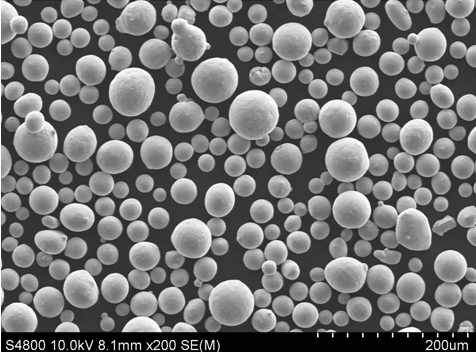
التعليمات
| سؤال | الإجابة |
|---|---|
| ما هي النماذج الأولية السريعة بالليزر؟ | النماذج الأولية السريعة بالليزر هي تقنية تصنيع إضافية تستخدم أشعة الليزر لإنشاء كائنات ثلاثية الأبعاد من التصميمات الرقمية عن طريق وضع المواد في طبقات. |
| ما هي الصناعات التي تستخدم النماذج الأولية السريعة بالليزر؟ | تُستخدم النماذج الأولية السريعة بالليزر في مختلف الصناعات بما في ذلك الفضاء والسيارات والطب والإلكترونيات الاستهلاكية. |
| ما هي مزايا النماذج الأولية السريعة بالليزر على التصنيع التقليدي؟ | توفر النماذج الأولية السريعة بالليزر أوقات إنتاج أسرع ومرونة تصميم أكبر وتقليل هدر المواد مقارنة بطرق التصنيع التقليدية. |
| ما هي المواد التي يمكن استخدامها في النماذج الأولية السريعة بالليزر؟ | يمكن استخدام مجموعة واسعة من المواد، بما في ذلك الفولاذ المقاوم للصدأ وسبائك الألومنيوم والتيتانيوم والمزيد. |
| هل النماذج الأولية السريعة بالليزر مناسبة للإنتاج الضخم؟ | عادةً ما تكون النماذج الأولية السريعة بالليزر أكثر ملاءمة للنماذج الأولية والإنتاج منخفض الحجم، ولكن التطورات تجعلها قابلة للتطبيق بشكل متزايد للإنتاج الضخم. |
| كيف تقارن النماذج الأولية السريعة بالليزر من حيث التكلفة؟ | في حين أن النماذج الأولية السريعة بالليزر لها تكلفة أولية أعلى، إلا أنها يمكن أن تكون أكثر فعالية من حيث التكلفة للتصميمات المعقدة أو عمليات الإنتاج الصغيرة نظرًا للقضاء على تكاليف الأدوات. |
| ما هي قيود النماذج الأولية السريعة بالليزر؟ | تشمل القيود التكاليف الأولية المرتفعة، وقيود المواد، وقيود حجم الأجزاء التي يمكن إنتاجها. |
الخاتمةن
النماذج الأولية السريعة بالليزر هي أكثر من مجرد كلمة طنانة؛ إنها تقنية تحويلية تعيد تشكيل الصناعات. سواء كنت تتطلع إلى إنشاء أجزاء معقدة للغاية، أو تقليل الهدر، أو ببساطة طرح منتج في السوق بشكل أسرع، فإن النماذج الأولية السريعة بالليزر توفر مجموعة من المزايا التي يصعب تجاهلها. مع استمرار تطور التكنولوجيا، ستتوسع تطبيقاتها فقط، مما يجعلها أداة أساسية لمستقبل التصنيع.

